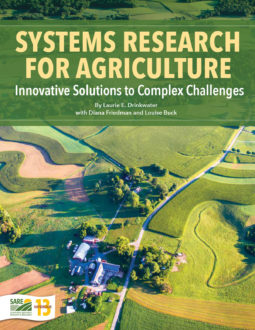Statistical and Mathematical Tools
Univariate Analysis
Multivariate Approaches to Data Analysis
Other Mathematical Analyses: Structural Equation Modeling and Path Analysis
Natural Resource Accounting
Life Cycle Assessment
Ecological Footprints
Carbon Footprints
Using Indicators to Assess Agricultural Systems
Sustainability Indicators and Indices: Practical Considerations
SARE Case Study: Using Life Cycle Assessment at the University of New Hampshire's Organic Dairy Research Farm
References
Indicators arise from values and they create values.Not only do we measure what we value, we also come to value what we measure. —Donella Meadows
Just as there are multiple ways to design systems experiments, there are several methods for analyzing the data from these experiments. This chapter presents typical quantitative and qualitative methodologies for analyzing systems and gives examples of their applications. Like the boundaries of a systems experiment, the statistical methods are determined by the questions being asked and by the experimental design.
Analyzing complex systems is challenging; try to include someone with statistical expertise, or work with a consulting statistician for the design and analysis phases.
This chapter covers three general approaches to agricultural systems analysis:
- Statistical and mathematical tools, including univariate and multivariate analyses and mathematical modeling
- Natural resource accounting methods, such as life cycle assessments and ecological footprints
- Sustainability indices/indicator frameworks.
